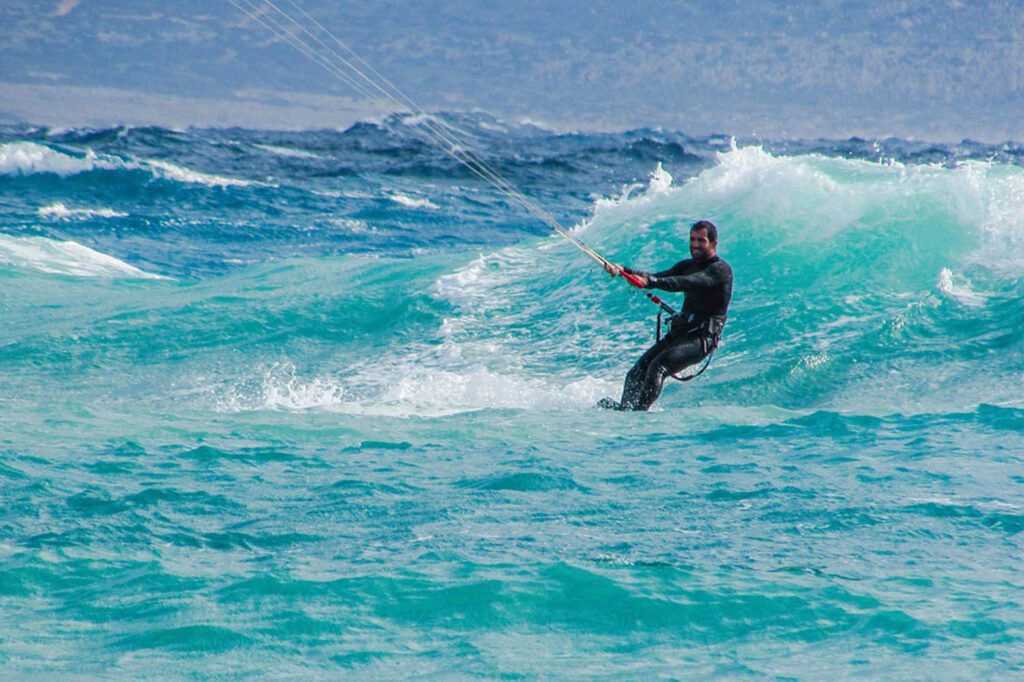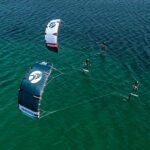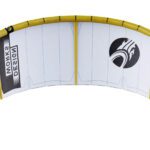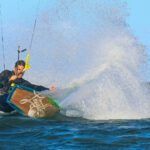
Stand Up on Your Board with Confidence
Introduction:
Kiteboarding is an exhilarating sport combining wakeboarding, snowboarding, windsurfing, paragliding, skateboarding, and surfing into one extreme adventure. However, for many beginners, the challenge lies not in controlling the kite but in mastering the art of standing on the board. This article explains how you can leverage your body’s natural abilities to successfully get on the board, even on your first attempt. By understanding and harnessing your muscular memory, you will be well on mastering kiteboarding.
Harnessing Your Muscular Memory:
One of the critical elements in learning kiteboarding is recognizing the importance of muscular memory. This is the phenomenon where “practice makes perfect.” When you repeatedly practice an action, your muscle memory helps you to perform the task more efficiently each time.

Muscular memory is vital in sports, and kiteboarding is no exception. For those with a background in surfing or similar activities, standing on the board might come naturally due to familiarity with the motion and balance. However, those new to the sport can still develop this memory through practice.
Harness and Leash Training:
- Try this simple exercise to simulate the experience of kiteboarding and develop muscle memory. You’ll need your kiteboarding harness for this.
- Put on your harness during your free time at home or the gym.
- Take the safety leash of your harness and attach it to an area around 6 feet high.
- Gently let your body fall backward.
This exercise gives you the feeling of security and simulates the force you’ll feel around your waist while kiteboarding.
Understanding the Role of the Bar and Harness: Many beginners mistakenly believe the bar pulls you out of the water and provides buoyancy. However, the bar aims to create a balance of power between your body, the board, and the kite, thus achieving a force equilibrium.
The harness is critical here – your balance point and where all the power is centered. The harness takes the load while the bar steers and controls the kite.
Implementing What You’ve Learned: Having practiced the above exercise several times, 3 to 5 minutes each, your body will begin to recognize the sensation of the force around your waist. On the day of your kiteboarding session, perform this exercise a few minutes before your class starts. This will reinforce muscle memory and prepare your body for the water.
During the session, remember that the bar is there to help you steer and maintain balance. It is not your primary source of buoyancy or power; your harness is.
Conclusion:
Kiteboarding is an exciting sport that requires a combination of skills. Standing up on the board is often seen as a daunting challenge. Still, by understanding and utilizing your body’s muscle memory and the function of your harness, you can face this challenge confidently. Practice the exercises to familiarize yourself with the sensation of the harness and how it bears your weight, and remember the role of the bar in steering and balance. With these in mind, you are setting yourself up for a successful and thrilling kiteboarding experience.
FAQ:
Q: What is muscle memory? A: Muscle memory is when your muscles become familiar with certain movements through repetition, making it easier to perform these actions over time.
Q: How does the harness help in kiteboarding? A: The harness is where all the power is centered; it takes the load and helps maintain balance.
Q: What is the function of the bar in kiteboarding? A: The bar is used to steer and control the kite and helps maintain a balance of power between your body, the board, and the kite.
Author
Latest entries
 WatersportsOctober 20, 2024Chasing the Wind: Pushing Limits with the Cabrinha Moto X 12 Meters
WatersportsOctober 20, 2024Chasing the Wind: Pushing Limits with the Cabrinha Moto X 12 Meters WatersportsSeptember 16, 2024Cabrinha Moto X: Enjoy the Ride
WatersportsSeptember 16, 2024Cabrinha Moto X: Enjoy the Ride WatersportsMay 19, 2024Cabrinha 2024 Moto XL Review: The Ultimate Lightwind Kite
WatersportsMay 19, 2024Cabrinha 2024 Moto XL Review: The Ultimate Lightwind Kite WatersportsDecember 16, 2023Kiteboarding Travel
WatersportsDecember 16, 2023Kiteboarding Travel




